AMD's Radeon HD 5870: Bringing About the Next Generation Of GPUs
by Ryan Smith on September 23, 2009 9:00 AM EST- Posted in
- GPUs
The Race is Over: 8-channel LPCM, TrueHD & DTS-HD MA Bitstreaming
It's now been over a year since I first explained the horrible state of Blu-ray audio on the PC. I'm not talking about music discs, but rather the audio component of any Blu-ray movie. It boils down to this: without an expensive sound card it's impossible to send compressed Dolby TrueHD or DTS-HD Master Audio streams from your HTPC to an AV receiver or pre-processor. Thankfully AMD, Intel and later NVIDIA gave us a stopgap solution that allowed HTPCs, when equipped with the right IGP/GPU, to decode those high-definition audio streams and send them uncompressed over HDMI. The feature is commonly known as 8-channel LPCM support and without it all high end HTPC users would be forced into spending another $150 - $250 on a sound card like the Auzentech HomeTheater HD I just recently reviewed.
For a while I'd heard that ATI was dropping 8-channel LPCM support from RV870 because of cost issues. Thankfully, those rumors turned out to be completely untrue. Not only does the Radeon HD 5870 support 8-channel LPCM output over HDMI like its predecessor, but it can now also bitstream Dolby TrueHD and DTS-HD MA. It is the first and only video card to be able to do this, but I expect others to follow over the next year.
The Radeon HD 5870 is first and foremost a card for gamers, so unless you're building a dual-purpose HTPC, this isn't the one you're going to want to use. If you can wait, the smaller derivatives of the RV870 core will also have bitstreaming support for TrueHD/DTS-HD MA. If you can't and have a deep enough HTPC case, the 5870 will work.
In addition to full bitstreaming support, the 5870 also features ATI's UVD2 (Universal Video Decoder). The engine allows for complete hardware offload of all H.264, MPEG-2 and VC1 decoding. There haven't been many changes to the UVD2 engine; you can still run all of the color adjusting post-processing effects and accelerate a maximum of two 1080p streams at the same time.
ATI claims that the GPU now supports Blu-ray playback/acceleration in Aero mode, but I found that in my testing the UI still defaulted to basic mode.
To take advantage of the 5870's bitstreaming support I had to use a pre-release version of Cyberlink's PowerDVD 9. The public version of the software should be out in another week or so. To enable TrueHD/DTS-HD MA bitstreaming you have to select the "Non-decoded high-definition audio to external device" option in the audio settings panel:
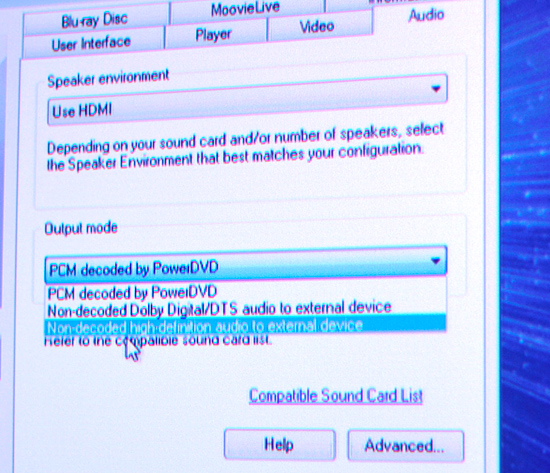
With that selected the player won't attempt to decode any audio but rather pass the encoded stream over HDMI to your receiver. In this case I had an Integra DTC-9.8 on the other end of the cable and my first test was Bolt, a DTS-HD MA title. Much to my amazement, it worked on the first try:
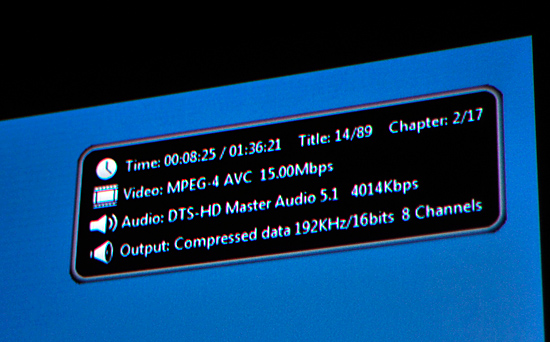
No HDPC errors, no strange player issues, nothing - it just worked.
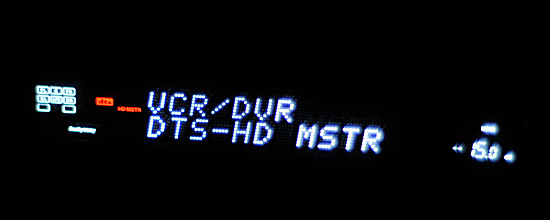
Next up was Dolby TrueHD. I tried American History X first but the best I could get out of it was Dolby Digital. I swapped in Transformers and found the same. This ended up being an issue with the early PowerDVD 9 build, similar to issues with the version of the player needed for the Auzentech HomeTheater HD. Switching audio output modes a couple of times seemed to fix the problem, I now had both DTS-HD MA and Dolby TrueHD bitstreaming from the Radeon HD 5870 to my receiver.
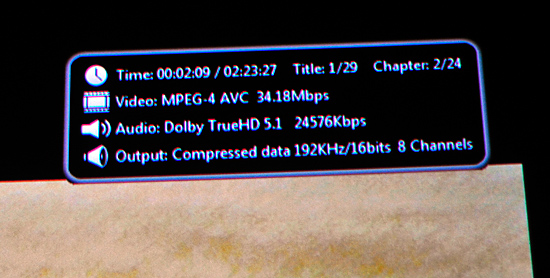

One strange artifact during my testing was the 5870 apparently delivered 1080i output to my JVC RS2 projector. I'm not exactly sure what went wrong here as 1080p wasn't an issue on any other display I used. I ran out of time before I could figure out the cause of the problem but I expect it's an early compatibility issue.

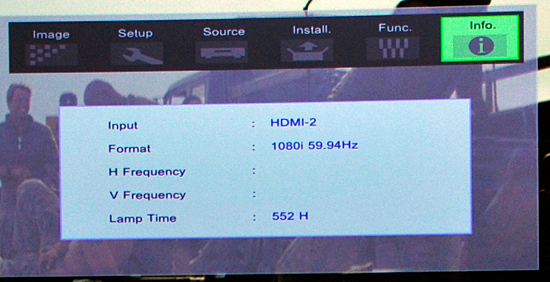
I can't begin to express how relieving it is to finally have GPUs that implement a protected audio path capable of handling these overly encrypted audio streams. Within a year everything from high end GPUs to chipsets with integrated graphics will have this functionality.










327 Comments
View All Comments
erple2 - Wednesday, September 23, 2009 - link
I think that you're missing the point. AMD appeared to want the part to be small enough to maximize the number of gpu's generated per wafer. They had their own internal idea of how to get a good yield from the 40nm wafers.It appears to be similar to their line of thinking with the 4870 launch (see http://www.anandtech.com/video/showdoc.aspx?i=3469">http://www.anandtech.com/video/showdoc.aspx?i=3469 for more information) - they didn't feel like they needed to get the biggest, fastest, most power hungry part to compete well. It turns out that with the 5870, they have that, at least until we see what Nvidia comes out with the G300.
It turns out that performance really isn't all people care about - otherwise nobody would run anything other than dual GTX285's in SLI. People care about performance __at a particular price point__. ATI is trying to grab that particular sweet spot - be able to take the performance crown for a particular price range. They would probably be able to make a gargantuan low-yield, high power monster that would decimate everything currently available (crossfire/SLI or single), but that chip would be massively expensive to produce, and surprisingly, be a poor Return on Investment.
So the comment that Cypress is "too big" I think really is apropos. I think that AMD would have been able to launch the 5870 at the $299 price point of the 4870 only if the die had been significantly smaller (around the same size as the 4870). THAT would have been an amazing bang-for-buck card, I believe.
Doormat - Wednesday, September 23, 2009 - link
[Big Chart] and suchfaxon - Wednesday, September 23, 2009 - link
page 15 is missing its charts guys! look at it, how did that happen lmaoGary Key - Wednesday, September 23, 2009 - link
Ryan is updating the page now. He should be finished up shortly. We had a lot of images that needed to be displayed in a different manner at the last minute.Totally - Wednesday, September 23, 2009 - link
the images are missingdguy6789 - Wednesday, September 23, 2009 - link
You very clearly fail to mention that the cheapest GTX295 one can buy is nearly $100 more expensive than the HD 5870.Ryan Smith - Wednesday, September 23, 2009 - link
In my own defense, when I wrote that paragraph Newegg's cheapest brand-new GTX 295 was only $409. They've been playing price games...SiliconDoc - Friday, September 25, 2009 - link
That "price game" is because the 5870 is rather DISAPPOINTING when compared to the GTX295.I guess that means ATI "blew the competition" this time, huh, and NVidia is going to get more money for their better GTX295.
LOL
That's a *scowl* "new egg price game" for red fans.
Thanks ATI for making NVidia more money !
strikeback03 - Wednesday, September 23, 2009 - link
lol, did they drop the price while they had 5870s in stock, then raise it again once they were gone?SiliconDoc - Wednesday, September 23, 2009 - link
Oh, so sorry, 1:46pm, NO 5870's available at the egg...I guess they sold 1 powercolor and one asus...
http://www.newegg.com/Product/ProductList.aspx?Sub...">http://www.newegg.com/Product/ProductLi...1&na...
---
Come on anandtech workers, you can say it "PAPER LUANCH !"